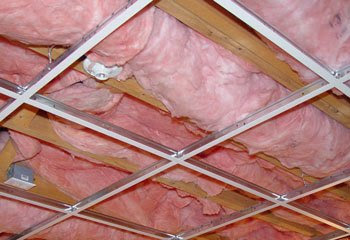Installing Batt Insulation Above Suspended Ceilings is a smart choice for enhancing both energy efficiency and comfort in your home or commercial space. This comprehensive guide explores everything you need to know about this insulation method, from its benefits and installation process to considerations and maintenance tips.

Understanding Batt Insulation Above Suspended Ceilings
Batt insulation is a type of insulation made from fiberglass or mineral wool, typically installed in rolls or batts. When placed above suspended ceilings, it serves multiple purposes:
- Thermal Barrier: Batt insulation helps prevent heat transfer between spaces, keeping rooms cooler in summer and warmer in winter.
- Sound Absorption: It reduces noise transmission between rooms, enhancing acoustic comfort.
- Moisture Control: Insulation above ceilings can help manage moisture levels, preventing condensation and mold growth.
Benefits of Batt Insulation Above Suspended Ceilings
- Energy Efficiency: By reducing heat loss or gain through the ceiling, batt insulation lowers energy consumption and utility bills.
- Improved Comfort: It creates a more consistent indoor temperature, making living and working spaces more comfortable year-round.
- Noise Reduction: Enhanced sound absorption properties contribute to a quieter environment, especially in multi-level buildings or offices.
- Environmental Impact: Lower energy usage translates to reduced carbon footprint, promoting sustainability.
Installation Process for Batt Insulation Above Suspended Ceilings
Proper installation is crucial for maximizing the effectiveness of batt insulation:
- Assessment and Measurement: Assess the ceiling area and measure the dimensions accurately to determine the amount of insulation needed.
- Preparation: Clear the area of any debris or obstacles that could hinder installation. Ensure safety equipment like gloves, goggles, and masks are worn.
- Cutting and Fitting: Cut batts to fit snugly between ceiling joists or above the suspended grid. Avoid compressing insulation, which can reduce its effectiveness.
- Securing and Adjusting: Secure batts in place without leaving gaps or voids. Adjust around obstacles such as light fixtures or ductwork.
- Safety and Regulations: Follow local building codes and safety guidelines throughout the installation process, especially regarding fire safety and ventilation requirements.
Considerations for Batt Insulation Above Suspended Ceilings
Before proceeding with installation, consider these factors:
- Ceiling Height: Ensure sufficient clearance between the insulation and any utilities or fixtures to maintain functionality and safety.
- Moisture Management: Address any existing moisture issues before installing insulation to prevent future problems.
- Accessibility: Plan for future access to utilities above the ceiling, such as plumbing or electrical systems, to avoid insulation obstruction.
Maintaining Batt Insulation Above Suspended Ceilings
To ensure longevity and efficiency:
- Regular Inspection: Check for signs of damage or displacement and repair as needed.
- Moisture Monitoring: Monitor moisture levels periodically to prevent mold or mildew growth.
- Upgrading: Consider upgrading insulation if energy efficiency standards or building codes change.
Read too: A Comprehensive Mr Cool Ceiling Cassette Review: Unveiling Excellence
Conclusion
Batt Insulation Above Suspended Ceilings offers a practical solution to enhance energy efficiency, comfort, and soundproofing in residential and commercial buildings. By understanding its benefits, installation process, considerations, and maintenance tips, you can make informed decisions to optimize your indoor environment effectively.